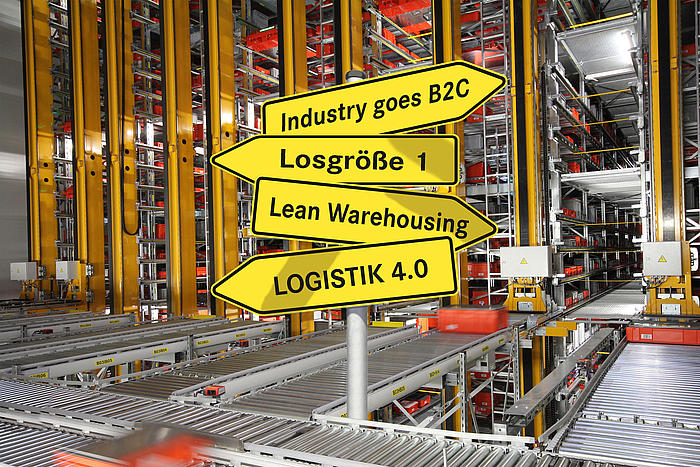Individual customized solutions according to customer requirements are the trend. Increasingly, companies adjust their production and logistics to 'batch size 1'. In an interview, our Managing Director Dr. Ralf Lüning explained how significant it is for the successful implementation of batch size 1 to adapt intralogistics and IT solutions to customer requirements.
Batch size 1 is the central topic especially in the production. What impact does this have on logistics?
Ralf Lüning: The single-item (or one-off) production requires a stream of proper parts reaching the right machine just in the nick of time. In times of same-day delivery, a speedy, streamlined dispatch is of the essence more than ever before. Therefore, every single pre- and post-production event requires intralogistics well in line with all requirements. As a system integrator we discuss batch size 1 even in trade transactions. This includes all instances where individual packages are ordered and forwarded. This process requires logistics systems, which are capable of handling an expedient turnover. Logistics companies have not only adopted the practice of handling individual packages, providing additional services has become yet another trend. Such services are attaching labels and packaging, in short, all but manufacturing. These value-added services blur the lines between production and logistics. This makes batch size 1 an issue, which reaches far beyond the immediate services around manufacturing.
What exactly creates the proper intralogistics design for batch size 1?
Ralf Lüning: Classic storage and conveyor technologies are designed to store and forward supplies of many uniform parts. However, one-off manufacturing results in individual products for direct delivery to the consumer. This will decrease rather than increase the need for storage space. Therefore, it may make sense to find a single hybrid solution for the production and distribution logistics. This would utilize existing space to the best advantage. One-off manufacturing leads to many more transactions in the logistics facility. Therefore, materials handling techniques must adapt to batch size 1. Rigid structures will not always fit the new requirements. Instead, combinations of shuttles and driver-less transport systems may offer suitable alternatives or add capacities. Such systems are flexible and their sizes can be easily adapted. In this solution, the flexible use of individual logistics elements forms a self-organizing logistics system. In this system, driver-less transport vehicles will move to the workplaces carrying the commissioned materials as and when needed. Dependent on customer specifications, these workplaces may be fully automated machines, manufacturing islands with human-robot interactions or order picking locations.
At these workplaces, fully automated processes fit into a perfectly coordinated scheme. This demands a proper information flow between all interacting systems. How could this information flow be managed?
Ralf Lüning: In one-off manufacturing, proper data processing is crucial. The following data must be transparent at all times: the part location, this part's current manufacturing status and when and where it will be needed in the production chain. This works only when all IT systems exchange data in real time and when there are no communication gaps in the entire value-added chain. The integration of MES, MFR and LVS systems is a step in this direction. However, all this will not be sufficient. In the future, even the work piece itself must have its own 'intelligence'. It must have a digital identifier, and the description of all product characteristics must identify it. The use of RFID tags makes this possible. In the final analysis, the logistic value-added chain comes closer and closer to its design according to the Internet of Things.
